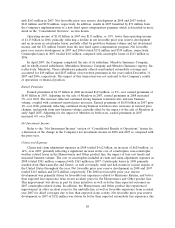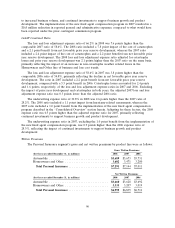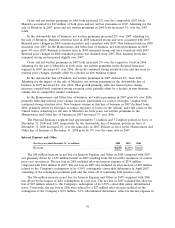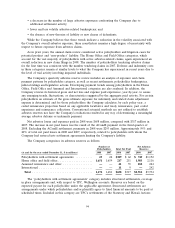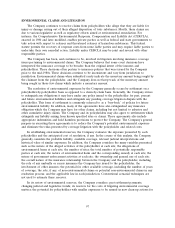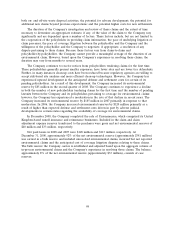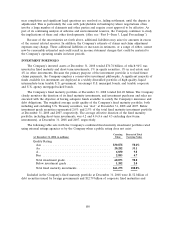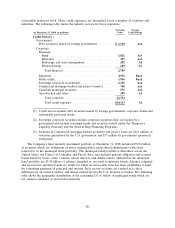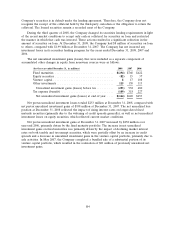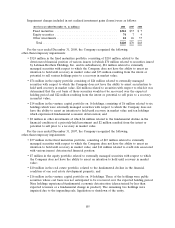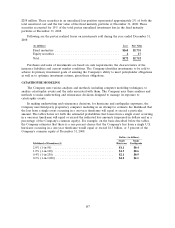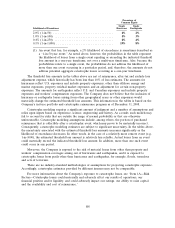Travelers 2008 Annual Report Download - page 110
Download and view the complete annual report
Please find page 110 of the 2008 Travelers annual report below. You can navigate through the pages in the report by either clicking on the pages listed below, or by using the keyword search tool below to find specific information within the annual report.both on- and off-site waste disposal activities; the potential for adverse development; the potential for
additional new claims beyond previous expectations; and the potential higher costs for new settlements.
The duration of the Company’s investigation and review of these claims and the extent of time
necessary to determine an appropriate estimate, if any, of the value of the claim to the Company vary
significantly and are dependent upon a number of factors. These factors include, but are not limited to,
the cooperation of the policyholder in providing claim information, the pace of underlying litigation or
claim processes, the pace of coverage litigation between the policyholder and the Company and the
willingness of the policyholder and the Company to negotiate, if appropriate, a resolution of any
dispute pertaining to these claims. Because these factors vary from claim-to-claim and
policyholder-by-policyholder, the Company cannot provide a meaningful average of the duration of an
environmental claim. However, based upon the Company’s experience in resolving these claims, the
duration may vary from months to several years.
The Company continues to receive notices from policyholders tendering claims for the first time.
These policyholders generally present smaller exposures, have fewer sites and are lower tier defendants.
Further, in many instances clean-up costs have been reduced because regulatory agencies are willing to
accept risk-based site analyses and more efficient clean-up technologies. However, the Company has
experienced upward development in the anticipated defense and settlement costs for certain of its
pending policyholders. As a result of this development, the Company increased its environmental
reserve by $85 million in the second quarter of 2008. The Company continues to experience a decline
in both the number of new policyholders tendering claims for the first time and the number of pending
lawsuits between the Company and its policyholders pertaining to coverage for environmental claims;
however, the Company has experienced a moderation in the rate of that decline in recent years. The
Company increased its environmental reserve by $185 million in 2007 primarily in response to that
moderation. In 2006, the Company increased environmental reserves by $120 million primarily as a
result of higher than expected defense and settlement costs driven in part by adverse judicial
developments in certain states regarding the availability of coverage for environmental claims.
In December 2008, the Company completed the sale of Unionamerica, which comprised its United
Kingdom-based runoff insurance and reinsurance businesses. Included in the claim and claim
adjustment expense reserves transferred to the purchaser were gross and net environmental reserves of
$40 million and $33 million, respectively.
Net paid losses in 2008 and 2007 were $128 million and $113 million, respectively. At
December 31, 2008, approximately 92% of the net environmental reserve (approximately $381 million)
was carried in a bulk reserve and included unresolved environmental claims, incurred but not reported
environmental claims and the anticipated cost of coverage litigation disputes relating to these claims.
The bulk reserve the Company carries is established and adjusted based upon the aggregate volume of
in-process environmental claims and the Company’s experience in resolving those claims. The balance,
approximately 8% of the net environmental reserve (approximately $33 million), consists of case
reserves.
98


